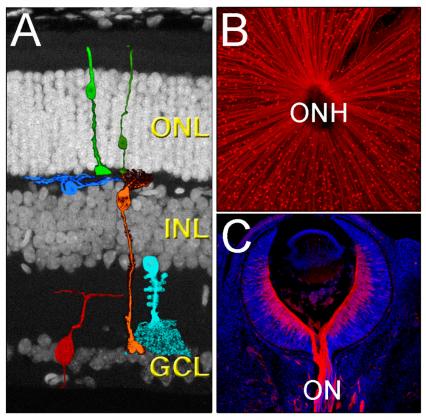Retinal Ganglion Cell Replacement: Current Status and Challenges Ahead
The neurons of the retina can be affected by a wide variety of inherited or environmental degenerations that can lead to vision loss and even blindness. Retinal ganglion cell (RGC) degeneration is the hallmark of glaucoma and other optic neuropathies that affect millions of people worldwide. Numerous strategies are being trialed to replace lost neurons in different degeneration models, and in recent years, stem cell technologies have opened promising avenues to obtain donor cells for retinal repair. Stem cell-based transplantation has been most frequently used for the replacement of rod photoreceptors, but the same tools could potentially be used for other retinal cell types, including RGCs. However, RGCs are not abundant in stem cell-derived cultures, and in contrast to the short-distance wiring of photoreceptors, RGC axons take a long and intricate journey to connect with numerous brain nuclei. Hence, a number of challenges still remain, such as the ability to scale up the production of RGCs and a reliable and functional integration into the adult diseased retina upon transplantation. In this review, we discuss the recent advancements in the development of replacement therapies for RGC degenerations and the challenges that we need to overcome before these technologies can be applied to the clinic.
Read our full paper here




